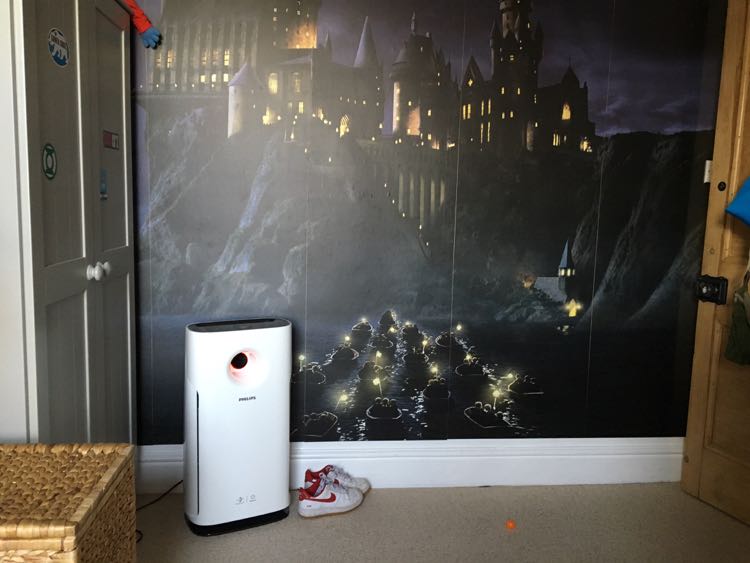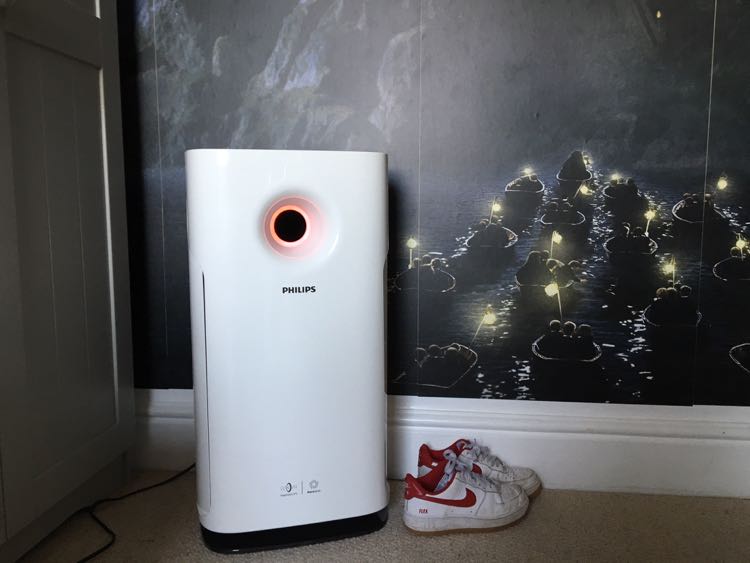 Can an air purifier help your hay fever and seasonal allergies? When you’re a family affected by allergies, the prospect of an air purifier becomes about a thousand times more appealing.
Can an air purifier help your hay fever and seasonal allergies? When you’re a family affected by allergies, the prospect of an air purifier becomes about a thousand times more appealing.
I’ve long suffered from allergy-related asthma, triggered by dust, fabrics, fur and perfume, while Flea has hay fever that sees her spend huge chunks of the summer sniffling into tissues and with red, itchy eyes.
That’s why I was so pleased when Philips invited us to try some of their allergy solutions, including this rather nifty looking air purifier.
Philips AC3265 – First Impressions
The Philips AC3256 uses HEPA filters and claims to capture 99.9% of bacteria in your room in just one hour, removing 99.99 percent of airborne particles such as dust, pet hair, and pollen.
We’ve been using the air purifier for around two weeks now. I am happy to confirm it’s made a huge difference to Flea’s wellbeing.
Setting up the Philips air purifier was pretty simple. Out of the box, all you need to do is flip open the front panel, insert the provided filter, and close everything back up. The air purifier has an admittedly not too long power cord, so we positioned it in the corner of Flea’s bedroom.
It’s not HUGE – a bit smaller than her laundry basket, certainly. The air purifier is small enough that it will fit inside her wardrobe in the winter, when I imagine we won’t need it. It’s very light and easy to move.

Once switched on, you control the purifier using some light-up controls on a dashboard set into the top of the appliance.
There’s an on-off switch, and then you can then set the level of the filter. There’s a range from 1-5 of fan power levels, or you can opt for “auto” or “auto allergen” mode to ensure it works at the level needed to maintain air quality. There’s also a sleep mode, which is quieter and switches itself into a lower mode once you’re asleep. Alternatively, you set it running for a specific number of hours, and it will turn off at the end of that time.
There are a couple of other features I liked. You can turn off the light in the middle of the machine that changes colour depending on air quality – blue for good, purple for okay, red for bad. The photo at the top of this post was taken just after Flea enthusiastically doused herself in Lynx body spray, so I think the red light is entirely reasonable.
There’s also a child-mode, which disables the controls so little fingers can’t tinker.
Does the Philips Air Purifier Help Hay Fever Sufferers?
In auto mode, we found the Philips air purifier quiet enough that we haven’t needed to use the sleep mode. It’s almost inaudible, and we turn the light off so it doesn’t disturb Flea.
After just one night, we noticed the difference. Flea woke up for the first time in a week with a clear nose and eyes. Honestly, this is nothing short of a miracle at this time of year.

Because we both suffer and the air purifier isn’t cheap, we use it during the day in my room, then move it into Flea’s room overnight, and it seems to be working well.
Certainly I’ve noticed that I’m waking up clear of allergy symptoms. This makes it easier to manage them through the day with conventional treatments like Prevalin.
Philips AC3256: Review
If you are suffering with hay fever then YES, this appliance will likely help you.
There are some small things to note. Like, use the air purifier in an area with the doors and windows closed for the best results. It will purify air in quite a large area (76 square metres), which is a good deal bigger than most of our rooms!
We found it light, and reasonably quiet. The ability to turn the fan and light down make it suitable for use in children’s bedrooms at night.
The Philips Air Purifier isn’t a small investment by any stretch. You’ll find it online for around £350 and replacement filters cost around £20 a time.
But if you’re a hay fever sufferer and it seriously impacts on the quality of your sleep or life at home, then I genuinely would recommend giving it a try.




